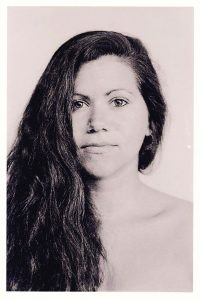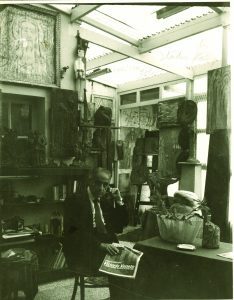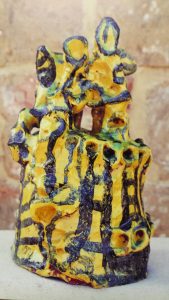While the Maltese art scene continues to expand and mature, questions of relevance are coming to the fore: How does Maltese art travel? Is it as insular as we think? Nikki Petroni looks at current research to find answers.

Isolation is dangerous.
When people are isolated they cannot discuss, they cannot share ideas, they cannot learn.
In art, isolation is dangerous for the very same reasons.
While the romantic image of the stoic, lonely artist remains ever popular, it hides the fact that in reality this would result in work that is restricted in its exploration of new ideas or philosophies. It encourages stubborn rot to set in. It hinders an understanding of where the art stands in the bigger picture.
As an island, Malta is isolated by its very nature. Its mindset reflects this. Sometimes we think we have little in common with everyone else. We also have a habit of reiterating the limitations we face due to the country’s dimensions. But the reality is that ideas and knowledge are not confined by physical circumstances. We need to make a continuous effort to challenge that. We need to think of art more holistically.
While many papers have been written on 20th century Maltese art and artists, documenting their work, preserving them, and making them publicly available, we lack the discourse that permits an objective assessment of the historical context in which Malta’s modern art was created.
What does the artist Josef Kalleya have in common with Europe’s leading modern sculptor Auguste Rodin? How did Gabriel Caruana directly contribute to the redefinition of ceramics as an art form? And in what ways does the evolution of cubism in Malta overlap with similar efforts in the Mediterranean, Japan, and even as far south as New Zealand?
Context is key
Addressing the methods of how we discuss art is still necessary, especially at a time when we are surrounded by all manner of images and visual languages that can be so difficult to translate into words. This is not to say that it is harder today to devise ways of communicating about art than it previously has been, but there is much that is being taken for granted in a society inundated with images.
Think of all the events taking place daily during this Capital of Culture year. There is so much going on, at such an accelerated rate, that there is barely enough time to think about it critically on a personal level, let alone develop alternative ways of debating art and culture publicly. Controversial commissions from previous years are still being lambasted on the basis of their ugliness and nonsensicality, yet we do not seem to emerge from these situations.
When people are isolated they cannot discuss, they cannot share ideas, they cannot learn.
In art, isolation is dangerous for the very same reasons.
Academia needs to focus on engendering further dialogue, critical dialogue, that influences and interacts with the public sphere so that artistic events may evolve progressively and yearn for perennial maturity.
Trying to address this, Dr Giuseppe Schembri Bonaci (Faculty of Arts, University of Malta) began organising a series of annual modern art conferences that address a locally-significant theme with global resonances. The idea was to provide a forum for analytic discourse to flourish.
Main takeaways

The first conference debated the legacy of French sculptor Auguste Rodin as confronted and expanded by sculptors from all over Europe, including Maltese artist Josef Kalleya. Locally, Kalleya’s work is not properly appreciated or understood, and the extent of his inventiveness and creativity has been systematically underrated. Kalleya fundamentally questioned the process of giving life to form on a deeply conceptual level, and he did this by developing the technique of driving a knife into clay rather than sculpting it. He also experimented with photography by creating dream worlds with the medium’s realistic language. Despite being new to all the foreign participants, the overwhelming reaction was positive, and many included him in their essays following the conference.

Ceramics, private collection.
Image Source: Richard England, Gabriel
Caruana: Ceramics, Melfi, Libria, 2001.
Something similar could be said when discussing modern ceramics and Gabriel Caruana’s pivotal contribution to the momentous historical trajectory of art. The 20th century was one of the most exciting eras for the development of the ceramic arts within Europe, and especially the rich heritage of the Mediterranean. At the time, Caruana was an innovator who transformed the Maltese art scene with the energy and vitality of his ceramic works.
The conference The Mediterranean Reception of Lucio Fontana’s Baroque Continuum questioned concepts of space and time, baroque principles, and contemporary aesthetics with the destruction of academically-defined beauty within this sphere of art production. The study of modern ceramics is a niche subject still in its infancy. The papers delivered offered significant contributions to the way that the topic is dealt with historically, by studying elements of space, composition, movement, and pictorial qualities, all of which encroach on the analytic territory of painting and sculpture. Caruana’s art is appreciated as imperative to the evolution of modern art in Malta, but this tends to be recognised because of his abstract idiom (a characteristic mode of expression in music or art).
Maltese modern artists Frank Portelli and Esprit Barthet were discussed in last December’s event. Both adopted the cubist aesthetic and reinterpreted it in their work. As the first avant-garde movement to radicalise the vision and conception of reality, cubism led painting down an unprecedented path of discovery. Despite its brevity, the movement created by Pablo Picasso and Georges Braque continued to cause shockwaves across the global artworld for decades because they completely changed the function of pictorial composition to that of a visually unintelligible thesis. The idiom was transformed and simplified by younger artists active in Paris at the time who developed an aesthetic termed as crystal, or crystallised, cubism.
Portelli and Barthet adapted the cubist idiom to their local experience of observing Malta’s developing urban landscape and post-war cultural shifts, developing a vernacular language born from that of the influential international movement. Although stemming from a deep respect for Picasso and Braque’s revolution, the Maltese artist’s importation of the term and style was both chronologically and conceptually distanced from its nascent form and the socio-political context of pre-WWI Paris. Portelli described his style as a form of crystallised cubism, linking him to the second generation of cubist painters in France. The situation reflects how visuals translate across cultural spaces, and the contingency of artistic meaning—when influential ideas expand beyond their place of origin.
Yet art is presented as de facto important, meaning that it is inherited with a sense of authority rather than one of intimate collective understanding.
What emerged from this gathering of researchers were several common underlying threads that relieved the Maltese scene of several lingering contentions that had been reiterated ad nauseum for about half a century. The filtered, de-politicised version of cubism that the Maltese articulated, and the reintroduction of the narrative in painting that cubism had dismissed, was present in the work of all the other artists, triggering the understanding that a difficult relationship with a major modern art philosophy was not unique to Malta.
The urgent task ahead
Malta’s modern art can only achieve relevance if seen and studied. Professional exhibitions that reflect various trends and studies within the art works are needed on a national and international level. Support from the state and large private entities is needed to expose these works to Malta’s citizens—currently many are found in people’s homes.
General knowledge on Maltese modern art is already very limited because the subject is not delivered to students from a young age, and current exhibition formats are not satisfactorily conceived as visual essays that both educate and entertain. The risk of alienating people from their own art history is too great, and academia relies on the cooperation of various institutional bodies to continue to evolve the level of scholarly and critical engagement.
Malta’s traditional and contemporary artistic heritage is rich and there to be discovered. Yet art is presented as de facto important, meaning that it is inherited with a sense of authority rather than one of intimate collective understanding. Rather than ‘knowing of’ art, people need to get to know art, converse with it, spend time beside it, just like meeting an old school friend with whom we share memories. These friendships behold a sense of understanding that transcends time. This is the kind of relationship we need to foster with our art and heritage, an essential link with a collective past that has shaped us as a people.




Comments are closed for this article!